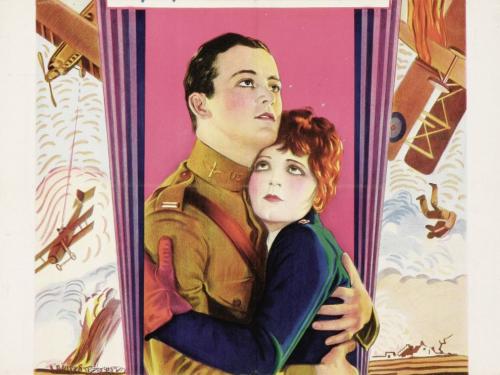
Stories of daring, stories of technological feats, stories of prevailing against the odds ... these are the stories we tell at the National Air and Space Museum. Dive in to the stories below to discover, learn, and be inspired.
Showing 1051 - 1060 of 1761

February 28, 2017
In 1939, Dale L. White Sr., a prominent African American pilot, set out on a "Goodwill Flight" from Chicago to Washington, DC, to make the case for African American participation in flight training, both civilian and military. His flight illustrated the challenges that African Americans faced in reaching equality—White was welcomed in Sherwood, Ohio, but was not permitted to land in Morgantown, West Virginia. Nearly 10 years later In 1948, President Truman integrated the armed services by presidential order.

February 27, 2017
When the Museum collected objects from Dr. Sally K. Ride's personal collection in 2013, it became clear that Dr. Ride privately say many connections between her history-making spaceflight and the state of American women in politics and public life. Several political buttons found in Dr. Ride's personal desk in her home study tell that story. Curator Margaret Weitekamp shares how these artifacts help tell the full arc of Dr. Ride's life.

February 25, 2017
We announced that the Apollo 11 Command Module “Columbia” will be a part of a national tour starting in October. Did you know this isn’t the spacecraft’s first tour? In 1970-71, NASA executed an ambitious public tour of Apollo 11 artifacts to 49 state capitals, the District of Columbia, and Anchorage, Alaska. The Command Module traveled nearly 26,000 miles for the tour. We share more interesting details of the first tour including which state had the largest crowds.

February 24, 2017
Airports. How much have you thought about airports? The anthropologist Marc Augé describes airports as “non-places” where travelers, despite location, encounter the same stores, chain restaurants, and security procedures. Museum Curator Jennifer Van Vleck disagrees. To her, despite their anonymous character, there is no other public place in which so many emotions are openly displayed—the joy of a great adventure, the sadness of saying farewell, or even the anxiety of moving.

February 22, 2017
The last time the Apollo 11 Command Module Columbia traveled the US was in 1970. Almost 50 years later, the historic spacecraft that helped take us to the Moon and back is headed out on the road for a nationwide tour. Following the tour, the Command Module will be placed on permanent display in the exhibition Destination Moon, scheduled to open in 2020 at the Museum in Washington, DC. The Museum’s conservation team will spend the next six months preparing the artifact for travel and display. Conservator Lisa Young shares what the next few months will look like and what she’s most interested in finding out about Columbia.

February 22, 2017
What do NASCAR and space travel have in common? Beyond reaching speeds that would give the rest of us whiplash, the two also share a very special fiber. Nomex® fiber is used in both spacesuits and racing suits. The fiber, made by DuPont™, is extremely flame-resistant and has many applications.

February 20, 2017
What made the balloon such a key graphic element in political and social satire for over one century? Was it the bulbous shape, or the fact that balloons are wayward craft that tend to go where the wind blows, in spite of the aeronaut’s best efforts? Whatever the reason, the great comic artists of the 18th and 19th century turned to the balloon time and time again in order to poke fun at people and events. The meaning of many of the political satires, the inside joke, is often lost on us today. If any of our friends out there can enlighten us as to the story behind one of these mysteries, we welcome the assistance!

February 20, 2017
The flight of Friendship 7 has gained new resonance thanks to the movie Hidden Figures. Curator Michael Neufeld examines the movie through the lens of a space historian. Neufeld admits that the movie deviates from history often, but the movie was good, well-acted, inspirational, and important. The movie, and the book it is based on, are destined to change our national narrative about the space program and the people who contributed to it.

February 13, 2017
Wings is among the most important films ever made and set the standard for all aviation films.

February 10, 2017
We recently took new photographs of the Mercury Friendship 7 spacecraft following its conservation. This is the same spacecraft that John Glenn piloted into Earth orbit, an American first. The images reveal details of the spacecraft that can be easy to overlook when taking the capsule in as a whole. Are you able to pinpoint the circles in the capsule's heat sheild where NASA extracted samples to test durability? Or what about the eye chart inside the capsule that John Glenn was asked to use to test his vision?